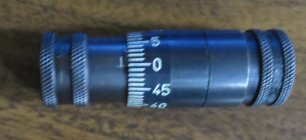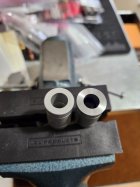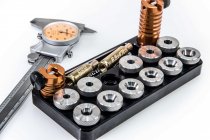So, I just got my whidden go/no go gauge and the first thing I'll say is it's a great little tool. Not sure why I waited this long to get one, it's much better than relying soley on a comparator.
Anyway, I decided to spot check some new brass and was quite surprised by the variation in headspace. In the video, the loaded round is fire formed brass that I neck sized only with no shoulder bump. It reads exactly .000 on the Whidden gauge (saami spec). The second one is a new piece of Alpha brass and it reads almost .004 under. The last one is a new piece of Federal brass and it reads exactly .005 over and in the "No-Go" section. That's about .009 difference between the two pieces of NEW brass.
It's funny because someone on this forum recently asked about prepping new brass and I commented that I didn't see a reason to FL size new brass. This has me rethinking that. I'm most definitely going to size this Federal brass.
Anyway, I decided to spot check some new brass and was quite surprised by the variation in headspace. In the video, the loaded round is fire formed brass that I neck sized only with no shoulder bump. It reads exactly .000 on the Whidden gauge (saami spec). The second one is a new piece of Alpha brass and it reads almost .004 under. The last one is a new piece of Federal brass and it reads exactly .005 over and in the "No-Go" section. That's about .009 difference between the two pieces of NEW brass.
It's funny because someone on this forum recently asked about prepping new brass and I commented that I didn't see a reason to FL size new brass. This has me rethinking that. I'm most definitely going to size this Federal brass.














